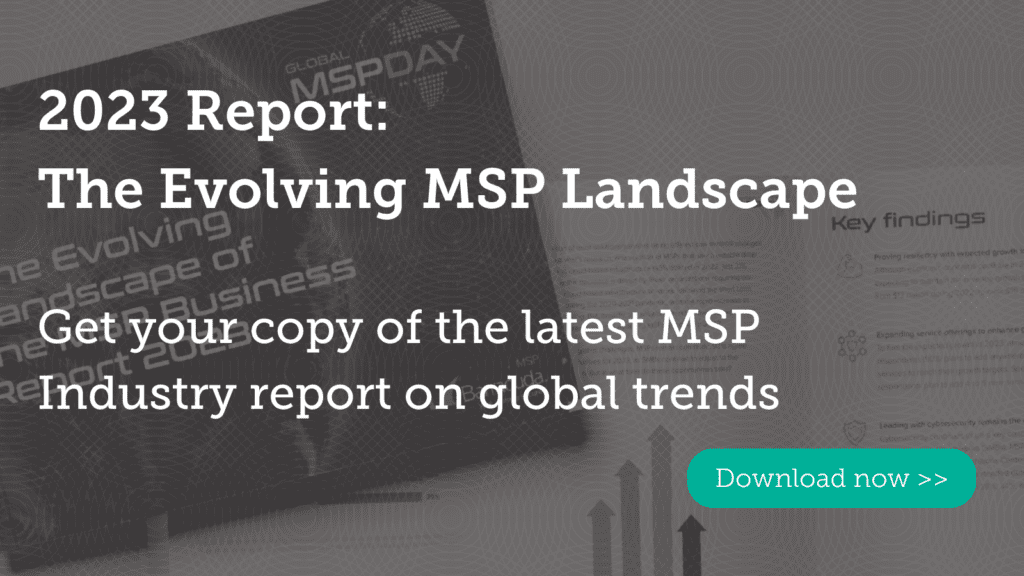 Once in a while when cold calling for your MSP, you’re likely to encounter what we describe as the managed services perfect storm: a company with at least 20 computers (but less than 50), who is unhappy with their current provider and has somewhere between 90 and 120 days remaining on their current agreement (or is in a month-to-month agreement).
Once in a while when cold calling for your MSP, you’re likely to encounter what we describe as the managed services perfect storm: a company with at least 20 computers (but less than 50), who is unhappy with their current provider and has somewhere between 90 and 120 days remaining on their current agreement (or is in a month-to-month agreement).
Now, that conversation happens about once out of every 200 conversations, which is to say, about every 2,000 dials. At a conservative 10 dials per hour, that’s less than once a quarter for a full-time caller. So, what’s happening during the other 199 conversations you’re having?
Let’s say we’ve gotten through the first big hurdles already — you’ve verified the prospect information (it’s the right company, in the right vertical, and they’ve got enough computers to be a real prospect for you), and now you’re moving on to objection handling. There are a few big “starter” objections for managed services. Today we’re going to work on the one I think is the most prevalent, and that’s the “We already have that!” objection.
How to move past “We already have that”
This objection can come from a gatekeeper, a champion, or a decision maker. This means you need to be ready to counter it the very first time someone picks up the phone and potentially a few more times during the sales process. That first call can go something like this:
Hi there, it’s Carrie Simpson calling from Everywhere Managed. We’re a local IT service provider, and I’d like to provide a quote for IT support. Who should I speak with?
Oh, we already have that.
You can give up at this point, but a better way to approach this objection is to try to keep your contact talking to you. The longer you can keep a prospect on the phone, the more likely you are to win an opportunity to present to them. Try following up with some of these questions:
- Great — Are you working with an outsourced company, or do you handle everything in-house?
- I understand — We’d like to be considered as an alternative. Who should I talk to?
- When was the last time you received a competitive quote?
- Great, we’re interested in earning your business. Who should I send some information to?
- We’d like the chance to meet with you when you’re evaluating new providers. When is a good time to follow up with you so we don’t miss the opportunity to be considered?
How to build rapport with open-ended questions
Each of these questions are non-intrusive, casual, and open-ended. The goal is to keep asking open-ended questions that lead to more questions until you have a follow-up activity agreed to by both parties. The question itself isn’t as important as the purpose, which is to build rapport and get a commitment for a next step.
So, for example:
We are working with an outsourced company.
How long have you been working with them?
Oh, two years or so.
A lot has changed in the past two years. What do you think the biggest change to technology has been in your industry in that time?
Oh, I’m not sure.
One of the ways we help our clients stay ahead of the technology curve is by meeting with them quarterly to discuss changes and trends in technology so they can remain ahead of their competition. How would we go about getting the opportunity to meet with your team to see if we might be able to help you?
Well, we’re in a contract for another year.
Okay — how far in advance will you begin planning a change? In my experience, it’s good to begin planning well in advance. When would be a good time for us to talk again?
Well, probably in about six months.
Okay, great — let’s get that follow-up call on the calendar. What can I send you in the meantime that would be of interest to you? What would you like to learn more about?
Well, do you have experience with other law firms?
We do! Let me send you some case studies and a testimonial or two. Actually, several of our legal clients will be joining us on DATE at TIME for a (EVENT YOU’RE HAVING). I would be happy to send you a few invitations to that event— who should I make the invitations out to?
And this can go on forever.
That is obviously a best-case-scenario type phone call. The prospect doesn’t hang up on you or tell you their brother owns the IT company they work with. They don’t swear at you or say they’re too busy to talk right now. But, it should give you a good idea of a conversation flow using open-ended questions to keep someone talking to you. If you keep moving the conversation forward, you’ll eventually get the opportunity to pitch them.
3 key takeaways on objection handling
Here are the three most important takeaways from this objection-handling process:
- If you ask a question that can be answered “yes” or “no,” they might say “no” — and that will end your call.
- Always ask your question quickly after any other statement.
- Always remain silent after you ask a question and give your prospect time to think and answer. Don’t suggest their answers to them. Get comfortable in silence.
Remember, you don’t have to win the appointment on call one. That alone takes a lot of pressure off inexperienced cold callers who might feel like their day will be nothing but rejections. The better you get at fielding this and other objections, the less rejection you’ll experience!

[…] Check out this post I wrote for SmarterMSP on getting past initial gatekeepers. […]